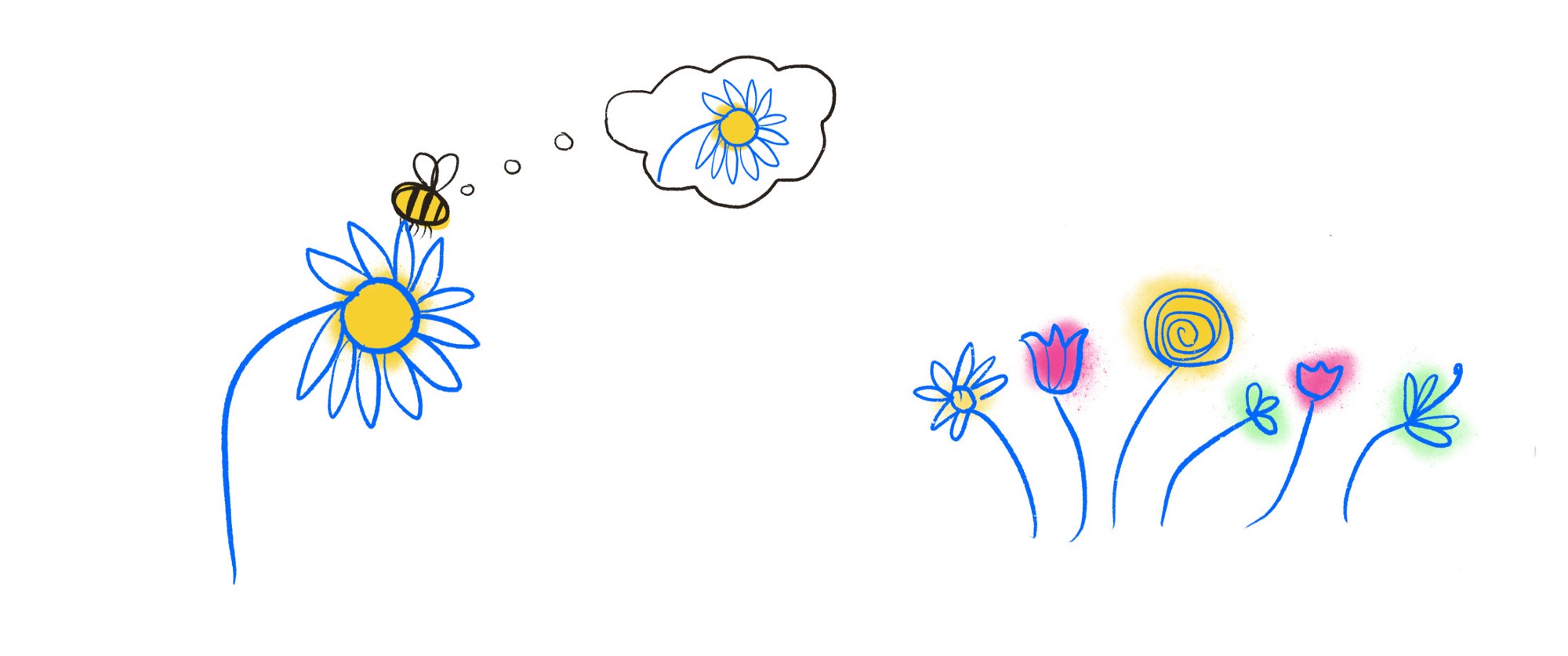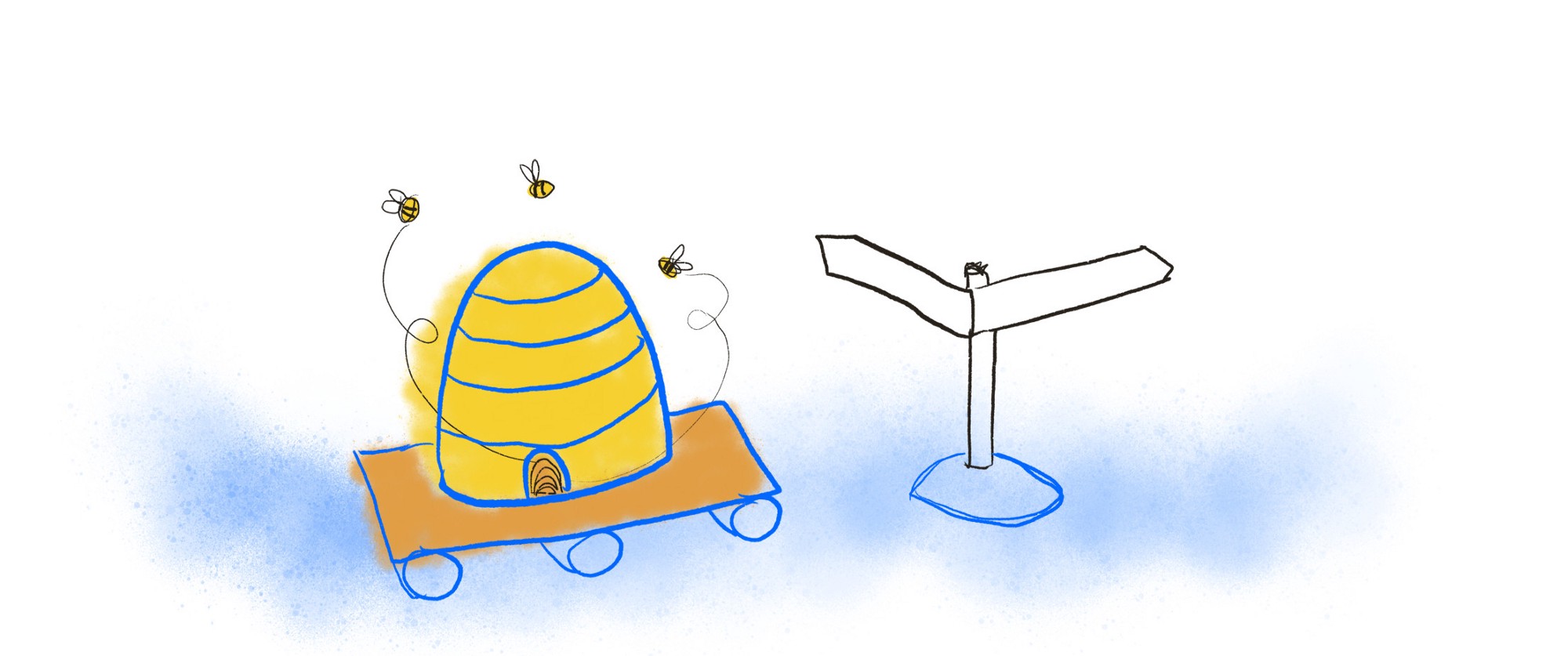(Read Part One here and Part Two here).
Welcome back to our series on the Discovery process at Despark. Remember from last week that you’re on your way to answering these questions as you design your digital product:
- Who (specifically) are you solving the problem for?
- How would it make these people’s lives easier?
- What greater impact would it have?
When you’re just starting to explore an idea, you can’t help but begin with assumptions. However, in order to make progress, you need to challenge each assumption and ideally replace it with actual research. Let’s look at some example scenarios showing how to identify assumptions in your thinking and gaps in your knowledge:
Starting from scratch

Chris has a bee in his bonnet
This is Chris. Chris wants to improve how primary schools hire supply teachers. He’s a supply teacher himself, and knows how exhausting the process can be. Chris has colleagues who also think he’s on to a good idea: they’d like to be able to accept teaching assignments from trusted schools directly via an app, instead of going through supply agencies.
What’s missing: Chris has great experience from his own point of view, but doesn’t have a thorough understanding of the needs of the other stakeholders. How do headteachers make decisions about staffing? What roles do the existing agencies fulfil? How do they make checks on teaching staff? What about pay? It’s tempting for Chris to reinforce his assumptions by chatting to friends and colleagues who agree with him, but to get a true understanding of the problem he’ll need to solve, he needs to draw in experience from every aspect of his industry, broadening his understanding.
This is what to do: Chris can get others on board who can fill in the gaps in his knowledge by networking and doing research. He could shadow those who work in different roles within the industry in order to intimately understand the pain points and barriers they face. If Chris starts designing questionnaires for user research, he can build a valuable collection of data and observations about which aspects of the supply teacher problem are most painful.
If you’re like Chris and need to do more research, ask yourself:
- Where are the gaps in my knowledge?
- Who can I bring on board to help fill them?
- Where can I go to meet the right people?
- What’s my timeframe for completing this?
We use a step-by-step process when we’re doing user research on a new product. When we talk to people about how they make do with the status quo, we keep our line of questioning open ended, so as not to introduce boundaries around an as yet non-existent product. After, all we want to know their ideas about how they’d prefer to solve the problems they face.
1 What are you trying to get done? (Gather context)
2 How do you currently do this? (Analyse workflow)
3 What could be better about how you do this? (Find opportunities)
These are general themes: the actual questions get much more detailed — the idea is to get an accurate picture of the actions and decisions your key people are taking every day. This helps us identify the workarounds in place and identify where the opportunities to innovate are.
For a real life example, our clients Altrix are just entering a testing phase for their app to improve how qualified nurses work with NHS hospitals to cover shifts. Without a solid discovery phase in place, we wouldn’t have had all the necessary insights to make sure that the compliance process was absolutely watertight.
Digital refinement

Sarah is having trouble thinking outside her company’s culture
Sarah is responsible for heading up the digital strategy of her insurance company, which has had an online portal for over a decade. She thinks the user interface could be vastly improved, but because it’s been so long since her department has done user research, Sarah isn’t sure where to start on addressing the high drop-off rate of visitors. Because users are confused and unable to find what they want, they still call customer service in high numbers.
What’s missing: Empathy, or being able to truly experience things from the end user’s point of view. Sarah’s team has developed a kind of blindness about the internal narrative of the company’s online visitors. She struggles to express users’ experiences in natural language: instead, there’s an inertia around the insurance terms used on the online portal, all of which are very familiar to the staff, and not so clear to the end users.
This is what to do: Sarah’s team should go out and explore with a beginner’s mind, shedding all assumptions about the way they’ve always done things. They need to talk to real customers, interrogate their language, and play games to put themselves in their shoes.
So if you’re like Sarah and need to get more empathetic, try this:
> Commit to being a fly on the wall in a real environment and witness how users talk and act first-hand
> Recruit users and key personnel to help play games like card sorting, role play and post-it note journeys. You can read more on games here.
> Go online and find consumer groups talking about your market (if you’ve already got customers, look closely at their existing feedback). Join Facebook groups, read Reddit and Quora threads and threads on consumer blogs.
> Decide on what you can do in a set timeframe and report back: you won’t be able to research everything, and it’s easy to get stuck in research, so keep focused.
Our own Boris Kirov knows how important it is to capture real scenarios, and will repeatedly go and visit a branch of a business to witness genuine interactions and language used, translating this into the online. Here’s his account of how we worked with BNP Paribas to redesign their user portal. For an example of how we set up a user testing environment to monitor exactly how visitors interacted with a digital experience at Vodafone, read this article.
New directions

Marlon is wondering which direction to move in…
Marlon wants to build an online platform for his counselling charity, which has worked to provide hands-on support to vulnerable adults for many years through a network of practitioners, workplace schemes and local information campaigns. Although Marlon and his team are very experienced, they are new to digital and are struggling to find ways to translate their business model for online; their first instinct is to simply try to duplicate it, building a static information portal.
What’s missing: Strategy and understanding of what it takes to build a digital platform.
This is what to do: Marlon and his team need to start small and create something useful in their digital product. If they can identify and pinpoint one or two features they want to offer at the start and prioritise them, they can test and iterate as they go. The idea is to reimagine their business as digital, instead of recreating it.
So if you’re like Marlon and need to get more strategic, try this:
> Do the R.A.T — riskiest assumption test. For instance, Marlon could test whether the over-50s would use an online chat function to talk with a counsellor. What other examples of successfully tested assumptions made in digital products can you think of?
> Look back through your existing user feedback and testimonials. Are there any common pain points that you could address in a new way? Try to narrow them down to one or two.
> Do a competitive audit. Which niches in your field are already being covered by complementary or competing organisations? Who isn’t being served?
> Be clear on your scope and budget. It’s better to get a minimum viable product out there more quickly, and start testing it, than to dedicate months to a complex and untested concept.
For more on this, read our interview with Wix developer Aaron Greenwald and what he had to say on getting your product to market fast, and read our case study on how we helped UK charity Best Beginnings translate their film resources for parents into an award-winning app. We’re currently ramping up for the launch of an app to revolutionise how skiers and service providers find each other in the mountains: a great example of identifying and testing assumptions.
Ready for the final part of this series? Let's bring it all together with Part Four of our DIY discovery series.